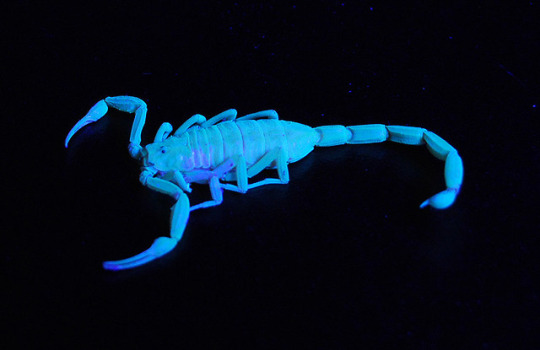#paruroctonus boreus
Explore tagged Tumblr posts
Text


P boreus at the insectarium.
#invertebrates#invertiblr#inverts#invert#bugblr#scorpion#paruroctonus boreus#northern scorpion#insectarium#pdxinsectarium
8 notes
·
View notes
Text
FORMLINE SCORPION 🦂🌃

This piece was done as a contest entry for a local contest that unfortunately did not win. Because of that, I feel comfortable sharing it here. This was a pretty experimental piece and I'm pretty satisfied with how it turned out.
This piece in question was based off the Northern Scorpion (Paruroctonus boreus), which is the only species of scorpion that lives in Canada and also known to glow a bright blue under UV light. (pictured below)

I'm kinda sad I didn't win, but I'm still proud of how the piece turned out. (Also this piece got finished around the end of October last year, so it's been on the backburner in terms of posting for a while lmao)
#cw insects#cw arachnid#formline art#indigenous art#native art#telekitnetic art#scorpion#northern scorpion#arachnology
732 notes
·
View notes
Text
Today I learned that there are two species of scorpions that live in Washington state: Paruroctonus boreus and Uroctonus mordax.
Pictures under the cut, FYI.
The Paruroctonus boreus, or northern scorpion has a range from Arizona to Canada. In fact it's the only scorpion found in Canada. The female averages around 38.9 mm, consistently larger than the males which average around 35.5 mm. They're nocturnal little buggers, and some bats up in Washington eat them, apparently. (I found out about them because I was reading about the bats and went, "Hang on, they eat scorpions??") Their venom apparently is less painful than a wasp or bee sting, and a sting doesn't hurt for long (about an hour).

The Uroctonus mordax, known as the California forest scorpion, western forest scorpion, or Pacific forest scorpion lives mainly (unsurprisingly, given the name) in California forests. However, there are some that live in Skamania and Lewis counties in Washington state, mostly in the foothills of the Cascade Mountains. They like more moisture than most scorpions, so mainly live under rocks, bark, and dead trees. They're dark brown-black, and are a bit smaller than the P. boreus (didn't find averaged data, but it looks like the males are again smaller, and the few measurements I did see tended to be between 30-33 mm).
0 notes
Text


@frostysquid submitted: Found this scorpion in white rocks, Utah. After doing some googling I think it’s Paruroctonus boreus but I am not sure. Thought I would share this friend!
I am terrible at IDing scorpions so I can't tell you what it is, but I can admire them! They are very nice. Hope they're having a nice scorpion day...
61 notes
·
View notes
Photo

Paruroctonus boreus “Northern Scorpion” Vaejovidae (Scorpiones)
Ginkgo Petrified Forest State Park, WA April 7, 2013 Robert Niese
Scorpions are a remarkably poorly studied clade of organisms. The Pacific Northwest is home to at least two described species (although there are likely others that remain undescribed): the Pacific Forest Scorpion (Uroctonus mordax) and the Northern Scorpion (Paruroctonus boreus). The Pacific Forest Scorpion, as its name would suggest, is most often found in dense coastal forests wherever it can find constant moisture (also found inland as well, west of the Cascades). The Northern Scorpion tends to prefer more open habitats than the Forest Scorpion and is typically the only species one will encounter east of the Cascades here in the PNW. They are quite abundant at the Ginkgo Petrified Forest State Park where they spend their days hiding from the sun under large rocks.
#Paruroctonus boreus#Paruroctonus#Northern Scorpion#Vaejovidae#Scorpiones#scorpions#Arachnida#Ginkgo Petrified Forest State Park#Washington#Pacific Northwest#natural history#macro photography#original photography#photographers on tumblr#Robert Niese
13 notes
·
View notes
Text




Didn't get a good picture of this one earlier, but also a new scorpion I got the other day.
19 notes
·
View notes
Text


Paruroctonus boreus
6 notes
·
View notes
Text





Can't wait until my Paruroctonus boreus grows up, they have such a gorgeous brown color
#invertebrates#invertiblr#inverts#invert#bugblr#scorpion#paruroctonus boreus#northern scorpion#insectarium#pdxinsectarium
2 notes
·
View notes
Text

Paruroctonus boreus peakin
3 notes
·
View notes
Text


Paruroctonus boreus is starting to get his colors after his molt.
5 notes
·
View notes
Text


Paruroctonus boreus also molted today.
3 notes
·
View notes
Text



Another one I had trouble taking photos of, Paruroctonus boreus. They can be differentiated from other paravaejovis based on how long the fingers of the pedipalp are.
2 notes
·
View notes
Text

Paruroctonus boreus after molting
1 note
·
View note
Text



Paruroctonus boreus
1 note
·
View note
Text


The other scorpion with an uncertain ID, was labeling this as a Paruroctonus boreus because that's what the seller labeled him as, I'm starting to suspect this is another Paravaejovis waeringi though.
9 notes
·
View notes
Text








All the vaejovidae US native scorpions, this huge family represents a lot of diversity, and they're endemic to the US and Mexico.
Smeringurus mesaensis - Paravaejovis spinigerus
Paruroctonus silvestrii - Vaejovis carolinianus
Paruroctonus luteolus - Pseudouroctonus apacheanus
Paruroctonus boreus - Paravaejovis waeringi
#invertebrates#invertiblr#inverts#invert#bugblr#scorpion#us native scorpions#smeringurus#paravaejovis#paruroctonus#vaejovis
2 notes
·
View notes